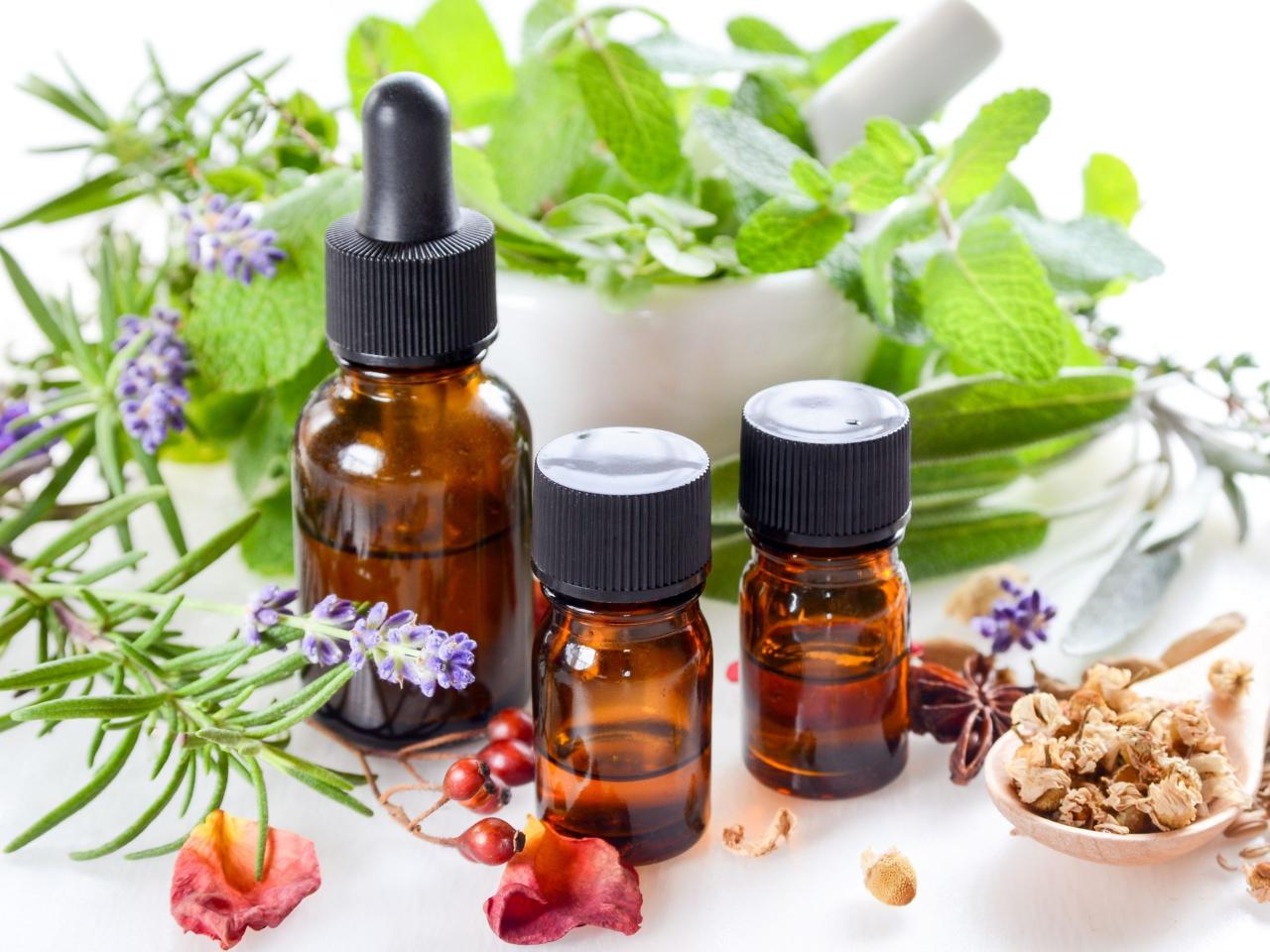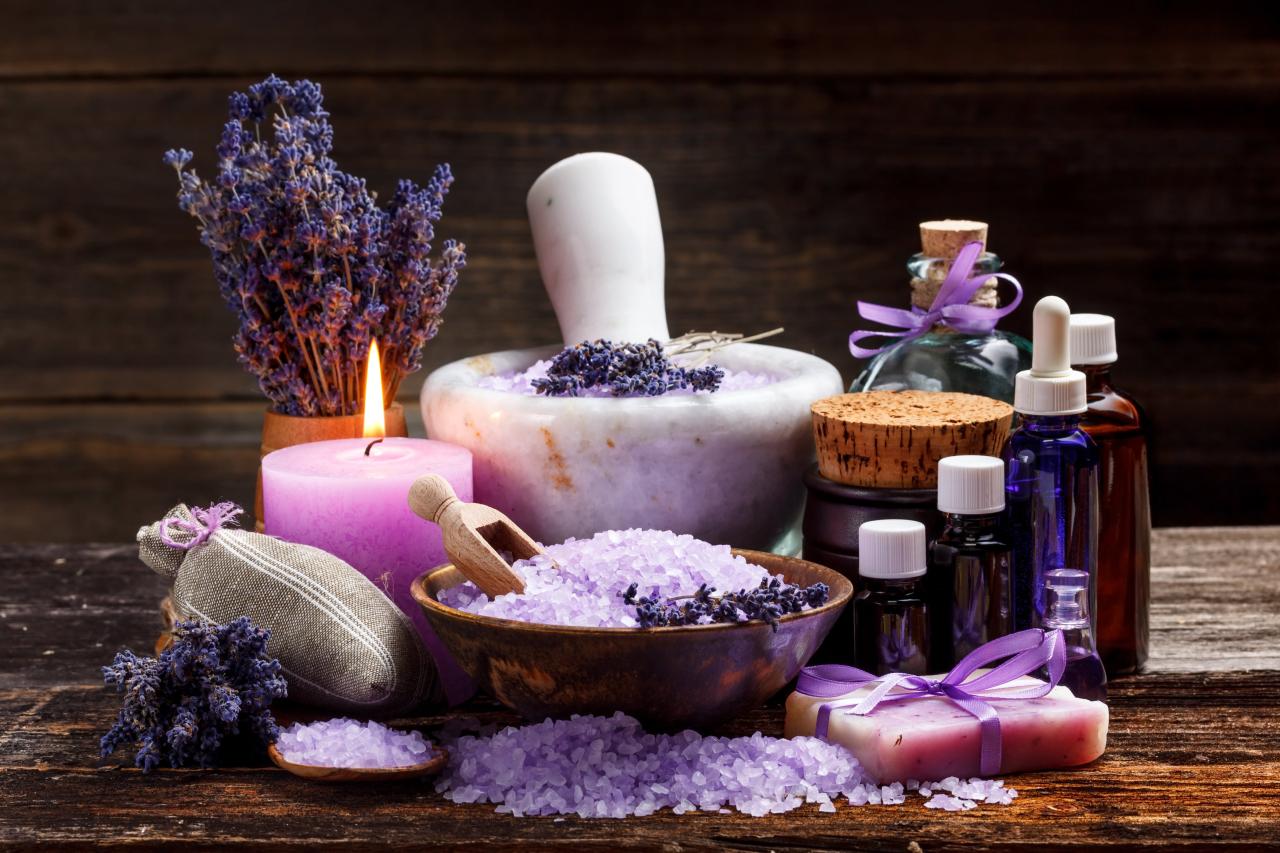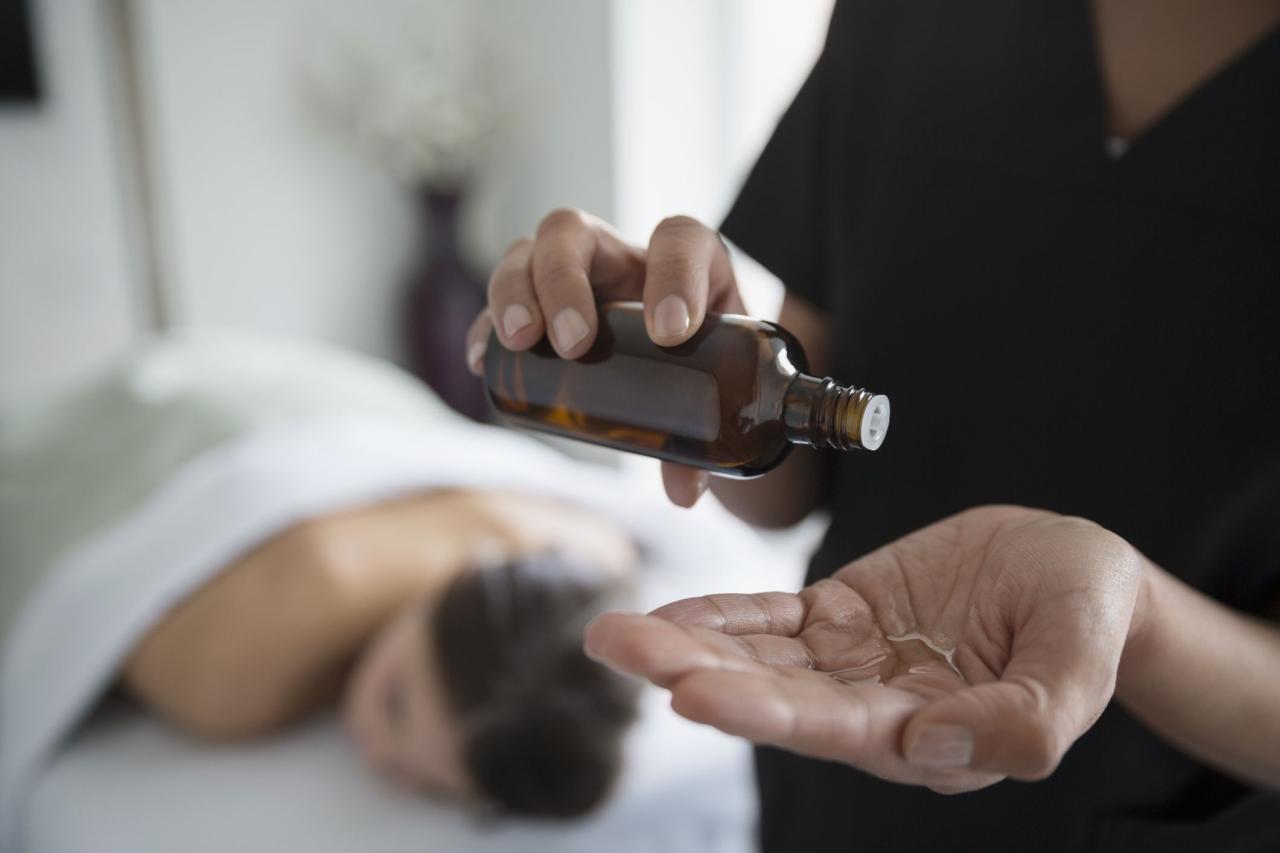Embark on a fragrant journey of relaxation and rejuvenation as we delve into the enchanting world of aromatherapy massage. This holistic therapy seamlessly blends the soothing power of essential oils with the therapeutic touch of massage, creating an experience that nourishes both body and mind.
From its ancient origins to its modern-day applications, aromatherapy massage has evolved into a cherished practice that offers a myriad of benefits, promising to alleviate stress, soothe aching muscles, and uplift the spirit.
Definition and Overview
Aromatherapy massage is a holistic therapy that combines the use of essential oils with massage techniques to promote relaxation, reduce stress, and improve overall well-being.
The origins of aromatherapy massage can be traced back to ancient civilizations, where aromatic plants and herbs were used for medicinal and therapeutic purposes. In the early 20th century, French chemist René-Maurice Gattefossé rediscovered the therapeutic properties of essential oils and coined the term “aromatherapy.”
Since then, aromatherapy massage has gained popularity as a complementary therapy for various health conditions.
Benefits and Applications

Aromatherapy massage combines the therapeutic benefits of massage with the mood-enhancing properties of essential oils, providing a holistic approach to relaxation and well-being. Essential oils are highly concentrated plant extracts that carry the aromatic compounds responsible for their unique scents and therapeutic effects.
When applied during a massage, these essential oils are absorbed through the skin and inhaled, creating a synergistic effect that targets both the physical and emotional aspects of health.
Physical Benefits
- Reduces muscle tension and pain:Essential oils like lavender, chamomile, and peppermint have analgesic and anti-inflammatory properties that help soothe sore muscles, relieve tension, and reduce pain.
- Improves circulation:Massaging with essential oils like rosemary, ginger, and cypress can stimulate blood flow, promoting detoxification and reducing fluid retention.
- Boosts immunity:Essential oils like eucalyptus, tea tree, and oregano have antibacterial and antiviral properties that can help strengthen the immune system and ward off infections.
- Promotes relaxation and sleep:Essential oils like lavender, valerian root, and ylang-ylang have calming and sedative effects that can help promote relaxation, reduce stress, and improve sleep quality.
Emotional Benefits
- Reduces stress and anxiety:Essential oils like lavender, bergamot, and frankincense have calming and anxiolytic properties that can help reduce stress, anxiety, and depression.
- Boosts mood and energy:Essential oils like citrus oils (lemon, orange, grapefruit), rosemary, and peppermint have invigorating and uplifting effects that can help boost mood and energy levels.
- Promotes emotional balance:Essential oils like clary sage, rose, and jasmine have harmonizing and balancing effects that can help regulate emotions and promote a sense of well-being.
Specific Conditions or Areas
Aromatherapy massage can be beneficial for a wide range of conditions and areas, including:
- Musculoskeletal pain:Aromatherapy massage can help reduce muscle tension, pain, and inflammation associated with conditions like fibromyalgia, chronic pain, and sports injuries.
- Stress and anxiety:Aromatherapy massage can help promote relaxation, reduce stress, and improve sleep quality, making it beneficial for individuals with stress-related conditions, anxiety disorders, and insomnia.
- Respiratory conditions:Essential oils like eucalyptus, tea tree, and lavender have decongestant and expectorant properties that can help relieve congestion and improve breathing in conditions like asthma and bronchitis.
- Skin conditions:Essential oils like lavender, chamomile, and tea tree have antibacterial and anti-inflammatory properties that can help soothe and improve skin conditions like acne, eczema, and psoriasis.
Essential Oils and Blends

Essential oils, extracted from plants, form the core of aromatherapy massage. These concentrated oils possess unique properties and aromas that influence both the physical and emotional well-being of individuals.
When selecting essential oils for massage, it is crucial to consider their therapeutic benefits and potential interactions. Some commonly used oils include lavender, known for its calming and relaxing effects, and peppermint, renowned for its invigorating and pain-relieving qualities.
Oil Blends
To enhance the therapeutic effects of aromatherapy massage, essential oils are often blended together. These blends synergistically combine the properties of individual oils, creating a more comprehensive and potent treatment.
- Relaxation Blend:Lavender, chamomile, and ylang-ylang create a calming and soothing blend that promotes relaxation and stress relief.
- Energy Boost Blend:Peppermint, rosemary, and grapefruit combine to invigorate and energize, making it ideal for combating fatigue and improving alertness.
- Pain Relief Blend:Eucalyptus, ginger, and black pepper form a blend that reduces inflammation, alleviates muscle tension, and provides pain relief.
Techniques and Methods

Aromatherapy massage incorporates various techniques to deliver the therapeutic benefits of essential oils. These techniques involve manipulating pressure, duration, and application methods to achieve optimal results.
Pressure plays a crucial role in aromatherapy massage. Light pressure promotes relaxation and stress reduction, while deeper pressure targets specific muscle groups to relieve tension and promote circulation. The duration of each stroke also matters, with shorter strokes providing stimulation and longer strokes inducing a calming effect.
Application Methods
- Effleurage:Gentle, gliding strokes that warm up the muscles and promote relaxation.
- Petrissage:Kneading and rolling motions that target deeper muscle layers to release tension.
- Tapotement:Rhythmic tapping or percussion that stimulates circulation and invigorates the body.
- Friction:Circular or cross-fiber strokes that generate heat and promote blood flow.
- Vibration:Gentle shaking or trembling motions that soothe sore muscles and promote relaxation.
Considerations and Safety
Before indulging in an aromatherapy massage, it is essential to consider certain factors to ensure a safe and enjoyable experience.
Health Conditions:Individuals with underlying health conditions, such as asthma, epilepsy, or high blood pressure, should consult a healthcare professional prior to receiving an aromatherapy massage. Certain essential oils may interact with medications or exacerbate existing conditions.
Contraindications
Certain individuals may not be suitable for aromatherapy massage, including:
- Pregnant women
- Individuals with open wounds or skin infections
- Those with severe allergies or sensitivities to essential oils
Concluding Remarks
As we conclude our exploration of aromatherapy massage, it becomes evident that this therapeutic practice is not merely a fleeting indulgence but a profound investment in one’s well-being. By embracing the synergy of essential oils and massage techniques, we unlock a gateway to relaxation, rejuvenation, and a heightened sense of harmony.
May this journey inspire you to seek out the transformative power of aromatherapy massage, allowing its fragrant embrace to guide you towards a path of serenity and holistic wellness.